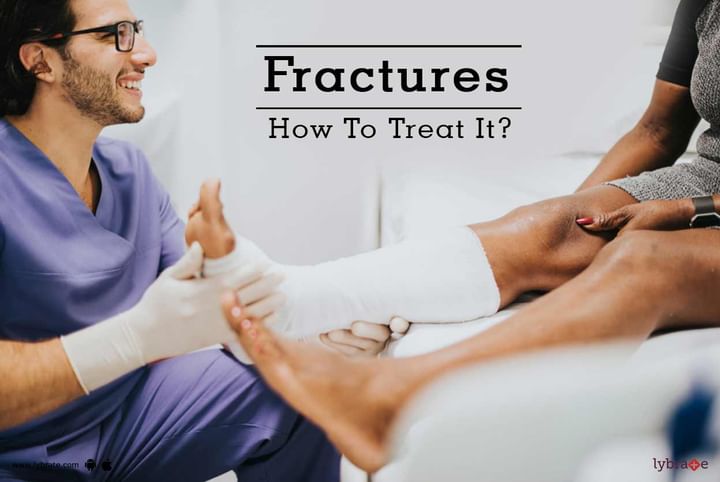Fractures - How To Treat It?
Fractures are simply a break in a bone. They can be caused due to injury, (traumatic fractures) or a pre-existing condition like osteoporosis that causes weakening of bones (pathologic fractures). There are many ways to classify fractures. All fractures fall into the major categories of simple and compound fractures. Simple fractures are fractures where bones remain inside the skin and don’t jut out. They are also called closed fractures.
Compound fractures, also called open fractures, are broken bones that penetrate through the skin. These types expose the bone and deep tissues to the environment. Compound fractures are more serious of the two. The healing here may be affected due to deep infections for which antibiotics need to be used. There are many different sub types of fractures and we’re only going to skim through them here.
- Comminuted fractures: Severe fractures in which a bone breaks into several smaller pieces.
- Avulsion fractures: A small piece of bone is completely torn off from the main bone due to fierce pulling off a part of the body.
Other types of fractures are characterised by the many different angles the bone breaks into like transverse, oblique and spiral fractures.
Diagnosis
When a bone is broken there are symptoms like swelling that doesn’t subside on its own and pain. In such a case it’s imperative that one goes to a doctor for a diagnosis. Doctors can usually recognise most fractures by examining the injury and taking an X-ray. The X-ray also provides a clear idea about the type of fracture and the degree of displacement of the bone. And, it’s important that the patient doesn’t wait too long before approaching a doctor. This is because bones begin to heal very quickly after a fracture and the bone tissue will heal using any tissue available. This can lead to a misalignment of broken pieces of bone and cause disability and loss of function.
There are cases when X-ray may not show a fracture. This is especially common in fractures in the hip and wrist in older people. For diagnosing these, doctors will get some other tests done such as a computed tomography (CT) scan, magnetic resonance imaging (MRI), or a bone scan.
Treatments
Fractures have to be treated by doctors. The doctors set the fractured bones in their proper place and hold them there so that they can heal. Setting a bone is called 'reduction.' Reduction without surgery is called 'closed reduction.' But if the fracture is serious, it’s going to require surgery with bone repositioning, called open reduction.
In extreme cases, pins, plates, screws, rods, or glue are used to hold the fractured bones in place, inside the body. Once the bone abutment has been treated, the bone is immobilised to allow the broken pieces to heal. In most cases, the fractured part is set in a rigid cast. The fractured ends of the bone can be fixed into place using metal pins connected to an external frame. This is removed after the bone has healed.



+1.svg)
